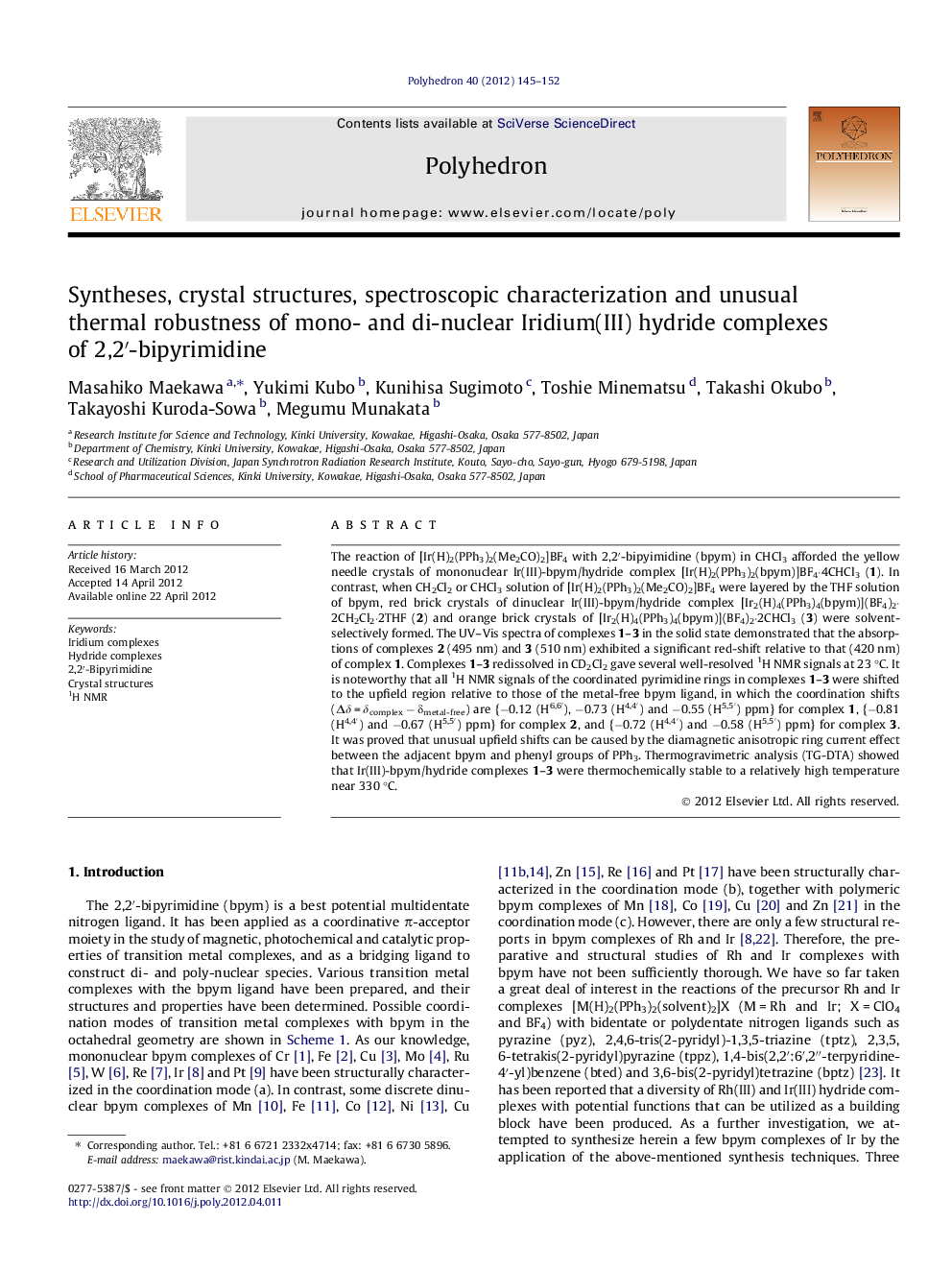| Article ID | Journal | Published Year | Pages | File Type |
|---|---|---|---|---|
| 1337488 | Polyhedron | 2012 | 8 Pages |
The reaction of [Ir(H)2(PPh3)2(Me2CO)2]BF4 with 2,2′-bipyimidine (bpym) in CHCl3 afforded the yellow needle crystals of mononuclear Ir(III)-bpym/hydride complex [Ir(H)2(PPh3)2(bpym)]BF4·4CHCl3 (1). In contrast, when CH2Cl2 or CHCl3 solution of [Ir(H)2(PPh3)2(Me2CO)2]BF4 were layered by the THF solution of bpym, red brick crystals of dinuclear Ir(III)-bpym/hydride complex [Ir2(H)4(PPh3)4(bpym)](BF4)2·2CH2Cl2·2THF (2) and orange brick crystals of [Ir2(H)4(PPh3)4(bpym)](BF4)2·2CHCl3 (3) were solvent-selectively formed. The UV–Vis spectra of complexes 1–3 in the solid state demonstrated that the absorptions of complexes 2 (495 nm) and 3 (510 nm) exhibited a significant red-shift relative to that (420 nm) of complex 1. Complexes 1–3 redissolved in CD2Cl2 gave several well-resolved 1H NMR signals at 23 °C. It is noteworthy that all 1H NMR signals of the coordinated pyrimidine rings in complexes 1–3 were shifted to the upfield region relative to those of the metal-free bpym ligand, in which the coordination shifts (Δδ = δcomplex − δmetal-free) are {−0.12 (H6,6′), −0.73 (H4,4′) and −0.55 (H5,5′) ppm} for complex 1, {−0.81 (H4,4′) and −0.67 (H5,5′) ppm} for complex 2, and {−0.72 (H4,4′) and −0.58 (H5,5′) ppm} for complex 3. It was proved that unusual upfield shifts can be caused by the diamagnetic anisotropic ring current effect between the adjacent bpym and phenyl groups of PPh3. Thermogravimetric analysis (TG-DTA) showed that Ir(III)-bpym/hydride complexes 1–3 were thermochemically stable to a relatively high temperature near 330 °C.
Graphical abstractThree novel mono- and di-nuclear Ir(III) hydride complexes of 2,2′-bipyrimidine were isolated and they were characterized by X-ray, 1H NMR, IR, UV–Vis and TG-DTA analyses.Figure optionsDownload full-size imageDownload as PowerPoint slide
